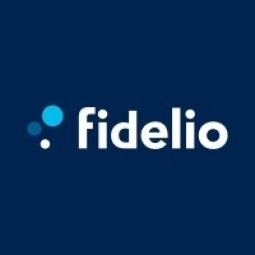公司规模
SME
地区
- America
国家
- Canada
产品
- Fidelio ERP system
技术栈
- ERP
- CRM
- Data Mining
实施规模
- Enterprise-wide Deployment
影响指标
- Productivity Improvements
- Cost Savings
技术
- 功能应用 - 企业资源规划系统 (ERP)
适用行业
- 食品与饮料
适用功能
- 销售与市场营销
- 采购
用例
- 供应链可见性(SCV)
- 库存管理
服务
- 系统集成
关于客户
Les Dépendances 是一家专门挑选、进口和分销来自欧洲和魁北克的优质奶酪的公司。其中一些奶酪由该公司独家供应。Les Dépendances 拥有广泛的分销网络,其产品在魁北克和加拿大其他地区的 800 多个销售点有售。该公司成立于 2001 年,发展迅速,业务扩展到国外市场。该公司拥有 30 名员工,在圣休伯特和温哥华设有办事处。
挑战
Les Dépendances 是一家进口和分销优质奶酪的公司,由于其在国外市场的增长,该公司面临着运营方面的挑战。该公司之前使用各种小型软件和 Excel 文件进行运营,但这些文件已无法满足其不断扩展的业务需求。他们需要一个集成系统来优化运营并自动化工作流程和程序。该公司还在为 2015 年的所有权变更做准备,这需要一个更加结构化和自动化的系统。
解决方案
Les Dépendances 实施了 Fidelio ERP 系统来解决其运营挑战。该系统 100% 集成到整个公司,为他们的需求提供了全面的解决方案。ERP 系统帮助公司构建了自动化流程,使日常运营管理更加轻松,并为公司所有权的转移做好准备。该系统还包括通过 CRM 和网络销售订单以及基于销售预测的采购订单进行现场跟进的功能。这有助于通过数据挖掘更好地了解公司的活动。
运营影响

Case Study missing?
Start adding your own!
Register with your work email and create a new case study profile for your business.
相关案例.

Case Study
The Kellogg Company
Kellogg keeps a close eye on its trade spend, analyzing large volumes of data and running complex simulations to predict which promotional activities will be the most effective. Kellogg needed to decrease the trade spend but its traditional relational database on premises could not keep up with the pace of demand.

Case Study
HEINEKEN Uses the Cloud to Reach 10.5 Million Consumers
For 2012 campaign, the Bond promotion, it planned to launch the campaign at the same time everywhere on the planet. That created unprecedented challenges for HEINEKEN—nowhere more so than in its technology operation. The primary digital content for the campaign was a 100-megabyte movie that had to play flawlessly for millions of viewers worldwide. After all, Bond never fails. No one was going to tolerate a technology failure that might bruise his brand.Previously, HEINEKEN had supported digital media at its outsourced datacenter. But that datacenter lacked the computing resources HEINEKEN needed, and building them—especially to support peak traffic that would total millions of simultaneous hits—would have been both time-consuming and expensive. Nor would it have provided the geographic reach that HEINEKEN needed to minimize latency worldwide.

Case Study
Energy Management System at Sugar Industry
The company wanted to use the information from the system to claim under the renewable energy certificate scheme. The benefit to the company under the renewable energy certificates is Rs 75 million a year. To enable the above, an end-to-end solution for load monitoring, consumption monitoring, online data monitoring, automatic meter data acquisition which can be exported to SAP and other applications is required.

Case Study
Coca Cola Swaziland Conco Case Study
Coco Cola Swaziland, South Africa would like to find a solution that would enable the following results: - Reduce energy consumption by 20% in one year. - Formulate a series of strategic initiatives that would enlist the commitment of corporate management and create employee awareness while helping meet departmental targets and investing in tools that assist with energy management. - Formulate a series of tactical initiatives that would optimize energy usage on the shop floor. These would include charging forklifts and running cold rooms only during off-peak periods, running the dust extractors only during working hours and basing lights and air-conditioning on someone’s presence. - Increase visibility into the factory and other processes. - Enable limited, non-intrusive control functions for certain processes.

Case Study
Temperature Monitoring for Restaurant Food Storage
When it came to implementing a solution, Mr. Nesbitt had an idea of what functionality that he wanted. Although not mandated by Health Canada, Mr. Nesbitt wanted to ensure quality control issues met the highest possible standards as part of his commitment to top-of-class food services. This wish list included an easy-to use temperature-monitoring system that could provide a visible display of the temperatures of all of his refrigerators and freezers, including historical information so that he could review the performance of his equipment. It also had to provide alert notification (but email alerts and SMS text message alerts) to alert key staff in the event that a cooling system was exceeding pre-set warning limits.

Case Study
Coca-Cola Refreshments, U.S.
Coca-Cola Refreshments owns and manages Coca-Cola branded refrigerators in retail establishments. Legacy systems were used to locate equipment information by logging onto multiple servers which took up to 8 hours to update information on 30-40 units. The company had no overall visibility into equipment status or maintenance history.







